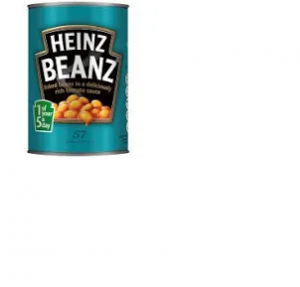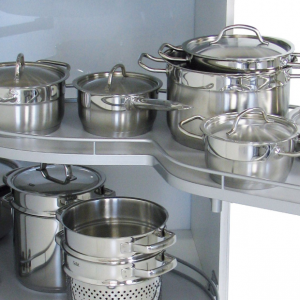How many bottles of wine will you be able to fit in your fridge, how many of your favourite cake tins or baking trays will fit in your new pan drawer and how much weight will your new larder storage take in terms of tinned foods?
When you are planning your new kitchen it is worthwhile taking some time to consider your storage needs and checking that your new design will provide the capacity and capability that you need without having to resort to storing things on top of cupboards spoiling the lovely new lines of your design or even worse having to bring the garage or utility room into play.
Some kitchen appliances help us do this. Wine coolers define their capacity in terms of numbers of bottles of wine that each model will store – pretty useful if you need to plan your wine storage and the same is usually true with dishwashers where capacity is often described in terms of number of place settings. However be careful with this numerator as each ‘place setting’ consists of 10 items of crockery and cutlery (a dinner plate, soup plate, dessert plate, glass tumbler, tea cup and saucer, knife, fork, soup spoon, dessert spoon and teaspoon) there is no consideration of washing pots, pans and so on.
Unfortunately though when it comes to fridges or freezers capacity is usually defined in terms of litres – it’s the same for ovens but what does a litre mean in real terms when deciding which model to choose. At Absolute Kitchens we like to talk turkey ….
A standard 60 litres oven will comfortably take a 22-26 lb turkey and a tray of roast potatoes and another smaller roasting tray at the same time., this is important missing out on Yorkshire puddings or roasted parsnips at Christmas could be interesting.
A standard built in oven is usually defined as being 600 mm wide however this typically translates into 400 mm useable width internally which means that three standard loaf cake tins can fit across each shelf although the same oven is only 500mm tall internally so you will only be able to use two of the shelves if you are baking in these or similar proportions.
Also consider the number of shelves available, as a 50 litre oven with three shelves can potentially cook more food than a 60-litre oven with only two, take into account how often you cook for large numbers, how often you cook multiple meals at the same time or how often you ‘batch cook’ – remembering that oven capacity can be augmented by warming drawers and/or alternate cooking appliances like combination ovens or steam ovens.
A three drawer 95 litre under counter freezer will accommodate approximately 2 large loaves of bread, 6 ready meals for two,1 bag of ice and 3 pre-prepared home cooked meals. There are multiple options in terms of numbers of drawers and/or compartments for under counter freezers and fridges which you may want to consider. You may want think about how to augment under the counter convenience with utility room (often garage) freezer or fridge capacity for less frequently used items.
Larder units are a great space saving approach to kitchen storage. Clever corner units help you access and use the darkest recesses of corner cupboards with ease and tall pull out or tandem larders help maximise space and force us into creating order in how we store things in the kitchen.
Did you know that a Kessenbomer ‘Le Mans’ corner storage unit has a weight capacity of 25 kg on each shelf and even more important do you know how that translates into what you need to store, assuming you are not storing actual kg weights in you cupboards.
Each shelf on a two shelf ‘Le Mans’ corner storage unit will hold 59 large tins of baked beans whereas each shelf on a tandem larder unit will take 15.
Let Absolute Kitchens help with a little bit of maths and some fun comparisons translating actual kitchen requirements into the sometimes less helpful manufacturers capacity measures can ensure that your new appliance and storage solutions are fit for your purposes.
Capacity planning when designing your kitchen
